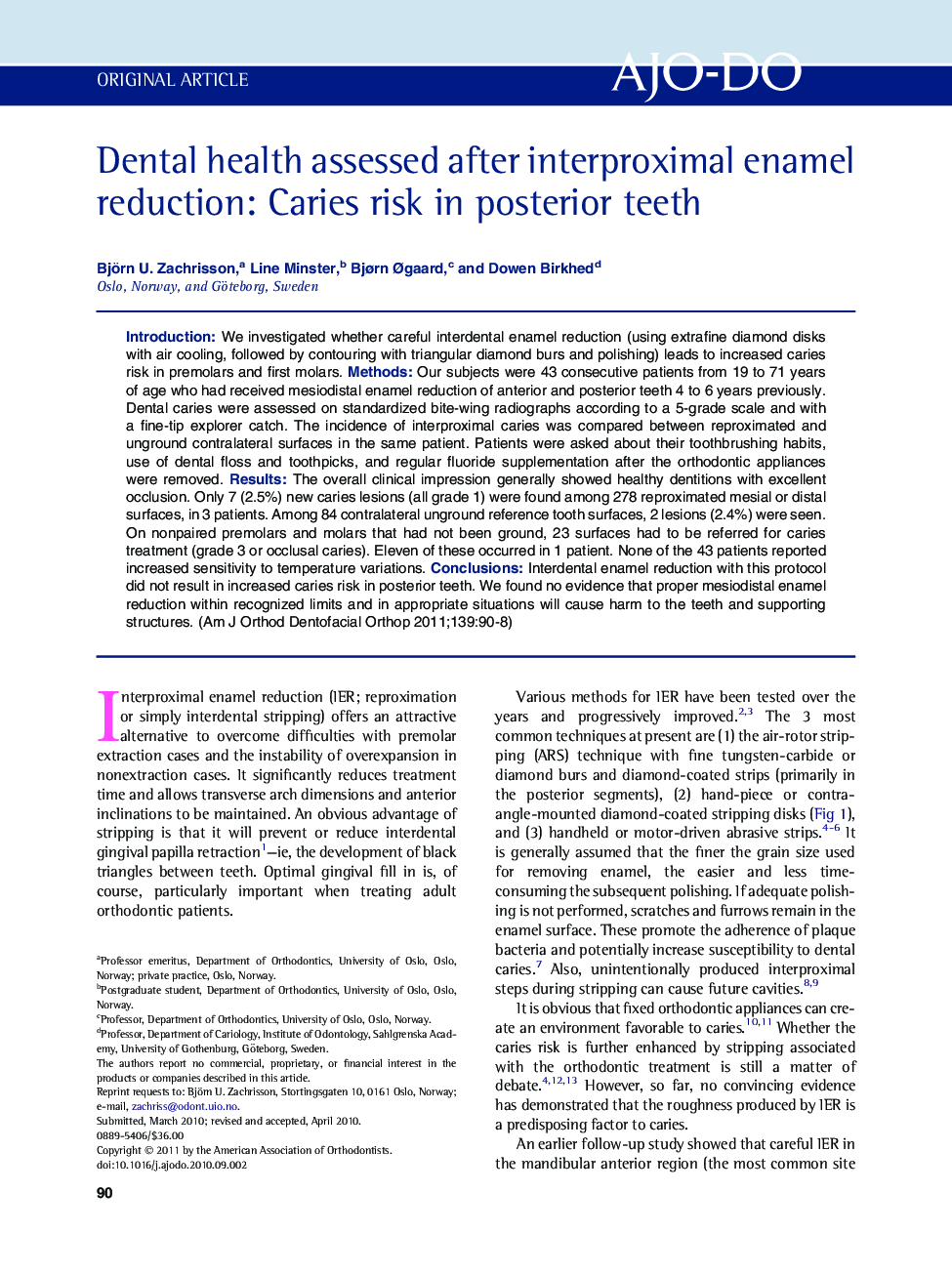| Article ID | Journal | Published Year | Pages | File Type |
|---|---|---|---|---|
| 3117340 | American Journal of Orthodontics and Dentofacial Orthopedics | 2011 | 9 Pages |
IntroductionWe investigated whether careful interdental enamel reduction (using extrafine diamond disks with air cooling, followed by contouring with triangular diamond burs and polishing) leads to increased caries risk in premolars and first molars.MethodsOur subjects were 43 consecutive patients from 19 to 71 years of age who had received mesiodistal enamel reduction of anterior and posterior teeth 4 to 6 years previously. Dental caries were assessed on standardized bite-wing radiographs according to a 5-grade scale and with a fine-tip explorer catch. The incidence of interproximal caries was compared between reproximated and unground contralateral surfaces in the same patient. Patients were asked about their toothbrushing habits, use of dental floss and toothpicks, and regular fluoride supplementation after the orthodontic appliances were removed.ResultsThe overall clinical impression generally showed healthy dentitions with excellent occlusion. Only 7 (2.5%) new caries lesions (all grade 1) were found among 278 reproximated mesial or distal surfaces, in 3 patients. Among 84 contralateral unground reference tooth surfaces, 2 lesions (2.4%) were seen. On nonpaired premolars and molars that had not been ground, 23 surfaces had to be referred for caries treatment (grade 3 or occlusal caries). Eleven of these occurred in 1 patient. None of the 43 patients reported increased sensitivity to temperature variations.ConclusionsInterdental enamel reduction with this protocol did not result in increased caries risk in posterior teeth. We found no evidence that proper mesiodistal enamel reduction within recognized limits and in appropriate situations will cause harm to the teeth and supporting structures.
